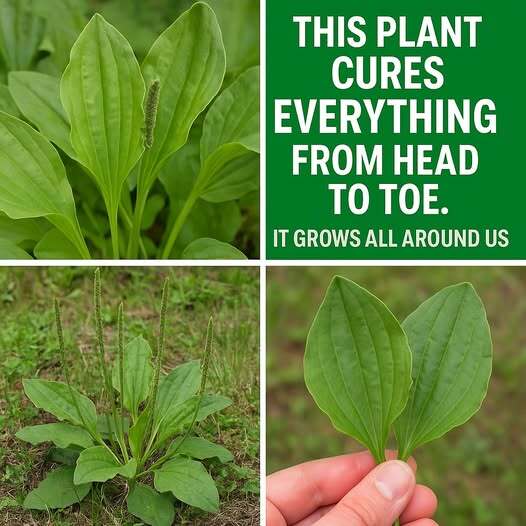You’ve probably walked past it hundreds of times without a second glance. That common “weed” growing in your yard, along sidewalks, and in parks could be one of nature’s most versatile medicines. Plantain (Plantago major and Plantago lanceolata) is truly a miracle plant that offers incredible healing properties for countless ailments from head to toe.
What is Plantain?
Plantain is a low-growing perennial herb with broad, oval-shaped leaves featuring prominent parallel veins. Not to be confused with the banana-like fruit of the same name, this plantain is a humble plant that grows virtually everywhere humans have settled, earning it nicknames like “white man’s footprint” and “Englishman’s foot” from indigenous peoples who noticed it spreading alongside European colonization.
There are two common varieties:
Broadleaf plantain (Plantago major) – featuring wide, oval leaves
Narrowleaf plantain (Plantago lanceolata) – with long, lance-shaped leaves
Both varieties offer similar medicinal properties and can be used interchangeably.
Nature’s First Aid Kit
Plantain has earned its reputation as a healing wonder through centuries of use across many cultures. Here’s why this unassuming plant deserves a place in your natural medicine cabinet:
Wound Healing
One of plantain’s most celebrated uses is its remarkable ability to heal wounds. The leaves contain allantoin, a compound that stimulates cell growth and accelerates healing. When applied to cuts, scrapes, burns, or insect bites, plantain can:
Stop bleeding quickly
Draw out infection, splinters, venom, and other foreign material
Reduce inflammation and pain
Speed healing and reduce scarring
For immediate field first aid, a “spit poultice” can be made by chewing a clean leaf and applying it directly to wounds, stings, or bites.
see continuation on next page
